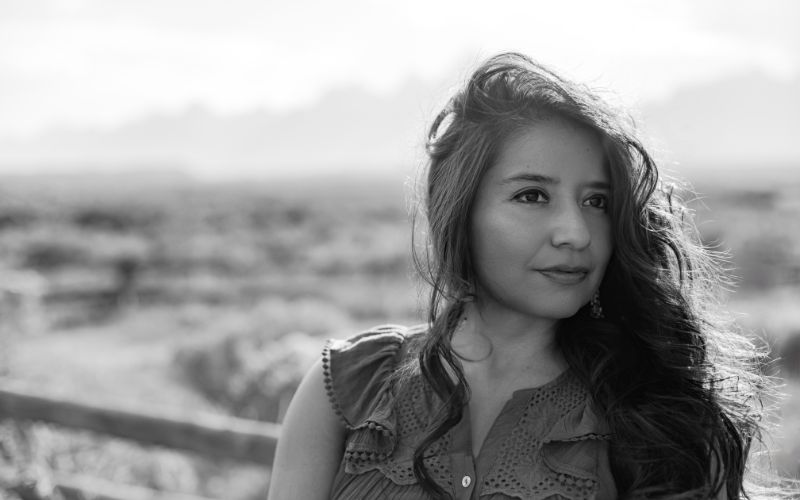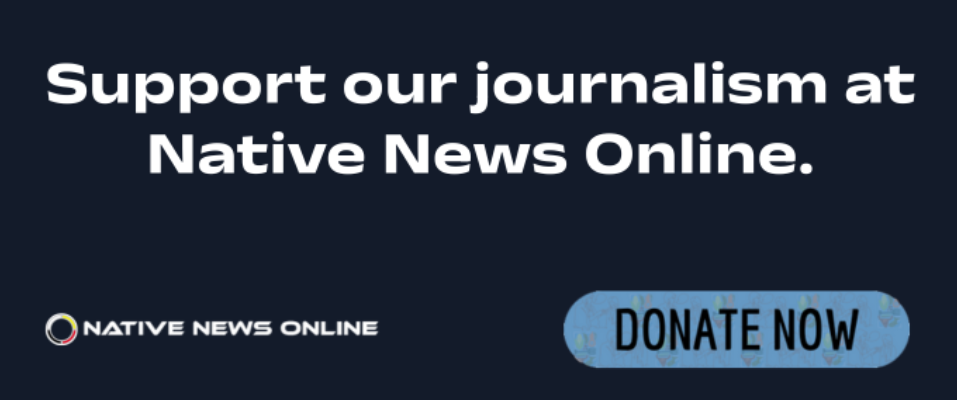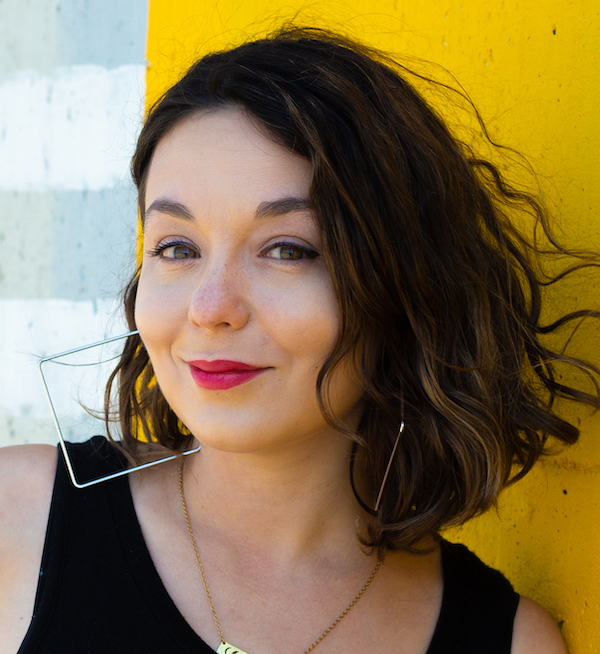
- Details
- By Elyse Wild
Melissa Skeet recounted the night she fled into the dark, wooded hill behind her apartment in Flagstaff, Arizona.
This article shares details that involve violence against Native American women. If you are or someone you know is in danger, you can contact these resources:
Stronghearts Native Helpline: 1-844-762-8483
National Domestic Violence Hotline: 1.800.799.SAFE (7233)
Her husky, Mika, an ever-present companion, was by her side as Skeet fell to her knees beneath the trees and wept. Skeet said she wrapped her arms around the panting dog, buried her face in Meeka’s fur and apologized.
"I'm sorry," Skeet repeated. "I'm sorry. I'm sorry."
Under the night sky, Skeet (Diné) said her mind raced with one thought, "Why is this happening?"
Almost ten years later, and the memory is still clear.
"I just felt so powerless," Skeet told Native News Online.
Skeet's body bore the pain of a violent attack at the hands of her then-boyfriend. Her wrists ached from when he grabbed her. Her neck throbbed in pain where he had pressed his knee to her throat. Bruises started to blossom on her back from being thrown against her apartment wall.
According to the National Institute of Justice, more than half of all Native American women experience intimate partner violence in their lifetime, bearing one of the highest rates of DV in the U.S.
U.S. colonization has cast a long shadow of genocide, broken treaty promises and generational trauma that drive high rates of domestic violence in Indian Country. Jurisdictional gaps, geographic isolation, insufficient funding and an uphill battle to make those in power care, make it difficult to prosecute offenders. Despite this reality,tribes and Native-led organizations are working to fill the voids in a criminal system that often fails to provide justice.
"The impact of domestic violence, of sexual violence is so profound," Rachel Carr-Shunk said."It's a public health issue. It should be a top priority for everyone, especially in Indian Country."
Carr-Shunk (The Sault Tribe of Chippewa Indians) is the deputy executive officer at StrongHearts Helpline, a Native-focused domestic violence hotline.
“We don’t talk about it enough,” Carr-Shunk said. “I'm not saying all, but a lot of survivors grew up in those homes where it was high stress, with unhealthy behaviors, unhealthy abusive behaviors that they experienced and witnessed. A lot of that also can be traced back to our boarding schools and again, that historical trauma, that that cycles and cycles of trauma have significant impacts in utero.”
According to the latest data from the National Library of Medicine, 25% of women in the U.S. have been victims of domestic violence, with rates increasing to 55% among Native women,a number Carr-Shunk says is likely underestimated do to undereporting and tribes being excluded from data collection.
Domestic violence was the most common violent offense for which inmates were held in Indian Country jails from 2013 to 2023, according to the Bureau of Justice Statistics.
Carr-Shunk emphasizes that violence against women is in direct contrast to many traditional tribal cultures, where women are considered sacred and play a foundational role in family and community.
"We've experienced significant levels of violence and genocide and erasure and removal," Carr-Shunk said. "Those impacts of the attack on our culture and the attack on our practices, women being sacred, everyone having a role, and mutual respect — all of that was stolen from us, yes, and we kind of went into an oppressive patriarchal system, which I think has just exacerbated our rates of violence."
Since 1994, the U.S. has directed $11 billion to shore up resources for victims of domestic violenceV, sexual assault and stalking through the Violence Against Women Act. The bill's renewal in 2013 included restoring tribal criminal jurisdiction over non-Native offenders who commit domestic violence. But, federal standards for prosecuting those crimes can be restrictive for many tribal communities.
Caroline LaPorte (Little River Band of Ottawa Indians), an attorney, tribal judge, and gender-based legal advocate at the Indian Law Center, told Native News Online that for many tribes with limited funds, the restored jurisdiction is a moot point.
"You had to have a court reporter, you had to have a law-trained judge, you had to be able to provide public defenders for indigent defendants," LaPorte said. "There was a requirement, Bureau of Prisons or with your local jail. You had to get an MOU with your state or your county. Then you had to provide the funding for the medical care if it was needed by a defendant, right? I would call them, like taxation on the ability to actually implement the Violence Against Women Act in a successful way. If a tribe doesn't have adequate funding to do it, you can't do it."
In a study conducted by the College of Nursing at the University of Cinncinatti Ohio, domestic violence victims reported experiencing e a sense of shame, stemming from a loss of sense of self. Victims can often be made to feel like they deserved the abuse and judgment from others that is often wrapped in a message of, "If it was so bad, why didn't she just leave?"
"We need to shift that narrative from, 'Why didn't she leave?' to 'Why did that person choose violence?'" Carr-Shunk said.
At minimum, the logistics of leaving an abusive relationship can be difficult. With basic needs — like housing and finances — often entwined in the relationship, it underscores the dire need for resources that provide survivors with shelter and other assistance to mitigate the fallout of leaving.
In the worst-case scenarios, the risks of leaving are even greater — studies show that when a woman is leaving an abuser they live with, her risk of being killed by that person increases.
Domestic violence goes beyond physical abuse — it includes emotional, cultural, financial, sexual and spiritual abuse. Name-calling, controlling access to money, coercing with sex and shaming cultural and spiritual practices are all means of exerting control over a person. In tribal communities, it can extend to keeping someone from participating in a ceremony, preventing them from voting, or, Carr-Shunk said, belittling a partner for "not being Native enough" or even "being too Native."
"It's very stigmatized," Carr-Shunk said. "And people tend to think of it as just the physical aspect, but it's so much more complex than that. The foundation of domestic violence is power and control. It's important to talk about that and to understand what control means and to understand what the red flags are."
It Can Happen to Anybody
On paper, Skeet may look like an outlier as a victim of abuse. Before the abusive relationship sent her running for the hills, she spent her career working as an advocate for domestic violence victims, helping them navigate the complexities of a court system stacked against them.
Her experience demonstrates what advocates want people to know: it can happen to anybody.
"That's the thing about domestic violence, is that it's indiscriminate. It doesn't matter your socio-economic class, doesn't matter your race," LaPorte said. "It doesn't matter if you're a tribal member, a descendant. It doesn't matter if it's urban, rural. It's something that impacts everybody."
Like many survivors, the red flags in Skeet's abusive relationship are more clear in hindsight. She said he called her at all hours of the day, drank heavily and frequently perpetrated conflict with others in which he presented himself as a misunderstood party.
Being on the receiving end of someone's intense attention can feel like being swept up in a whirlwind romance. In an abusive relationship, that can quickly lead to being controlled and isolated, often disguised in a sentiment of "us against the world” — a strategy used by abusers called “love bombing.”
On the night of the attack, Skeet confronted her ex about his drinking, which had gotten so severe that he sold some of her possessions to buy liquor. While the pair argued, he quickly escalated to violence. She said he picked her up and threw her across the apartment. Skeet hit her head on the ground so hard that her vision blurred. She locked herself in her bedroom and used her laptop to reach out to a friend for help. Her abuser took her phone, and the computer was her only means of contancting anyone, but he burst through her door and broke her laptop over his knee.
When Skeetleft the bedroom, he threw her on the ground and pressed his knee to her neck. As she gasped for air, she thought of her mom.
"I couldn't breathe," she said. "I was panicking, and I remember, like, seeing my life flash before my eyes. I've never witnessed that. I remember seeing my mom, and I cried. I saw her smile, and I was afraid I'd never see her again."
When he released her, she scrambled onto her knees, lungs rasping as she finally drew breath. She convinced him to giver her back her phone, and she grabbed a duffel bag, her dog and fled into the woods behind her apartment, steadying her nerves to drive to her friend's house.
In addition to the attack, that night Skeet experienced what many Native women in her situation do: fear that involving the police would escalate the situation, or that she herself would get in trouble. In 2024, 52% of domestic violence victims did not report the crimes to police, according to a report by the Bureau of Justice Statistics. In Native communities, where trust with law enforcement is fractured, the number is likely greater.
"There are all sorts of situations that can occur, and it's understandable that a survivor wouldn't want to engage that (law enforcement) space," LaPorte emphasized.
Which is why, LaPorte said, elevating awareness of cultural resources for Native victims is so critical.
Less than half of Tribal nations have domestic violence programs to serve their relatives. StrongHearts, founded in 2017, has amassed a network of 266 Native centered resources to fill that gap. When individuals contact StrongHearts, advocates are trained in safety planning and prioritize connecting callers to programs on their reservation or in their local area. In 2024, the hotline made 4,330 referrals to Native providers and 1,250 referrals to non-Native providers.
"It's important that they can actually talk to someone who is Native, who understands the experience of domestic violence and sexual violence in the unique way that it impacts our people," Carr-Shunk said. "Having that peer support from someone with shared identity with you is really important."
There are a few steps that LaPorte recommends for Native survivors of domestic violence: if law enforcement is involved, connecting with a victim's advocate can ease the burden of traversing the complexities of the court system. And, if one obtains a personal protection order — a court order that disallows a person from contacting another individual — she urges tribal citizens to register the order with the state and local law enforcement agencies to make the order fully enforceable.
For anyone experiencing domestic violence and afraid to speak up, there is a community of advocates and fellow survivors waiting.
"I want people to know that when they're ready to talk and when they're ready to reach out and get help, there's a whole network of individuals, sisters, aunties, Two Spirit people, allies from other spaces, want to be there for you," LaPorte said. "There may not be a ton of resources for American Indian, Alaska Native survivors, but there are a lot of really good people who are doing this work, who deeply care about you and who want to see a positive outcome."
Skeet says healing is an ongoing process.
“You keep talking about it and you think that you are over it, but then something will trigger you and its like your surviving it all over again,” she said.
Today, Skeet is in a healthy relationship and living in Washington State. She still has Meeka, and she and her boyfriend added another dog to their family.
Before the attack, she joined a roller derby team, where she found community and her warrior strength. Last fall, thousands followed her journey as she roller-skated across the country to raise awareness for Missing and Murdered Indigenous People.
"I didn't let him take that part of my spirit and soul,” she said. “My ancestors and I are too stubborn for that to happen. So I’m still here.”
More Stories Like This
Chumash Tribe’s Project Pink Raises $10,083 for Goleta Valley Cottage Hospital Breast Imaging CenterMy Favorite Stories of 2025
The blueprint for Indigenous Food Sovereignty is Served at Owamni
Seven Deaths in Indian Country Jails as Inmate Population Rises and Staffing Drops
Sen. Luján Convenes Experts to Develop Roadmap for Native Maternal Health Solutions


